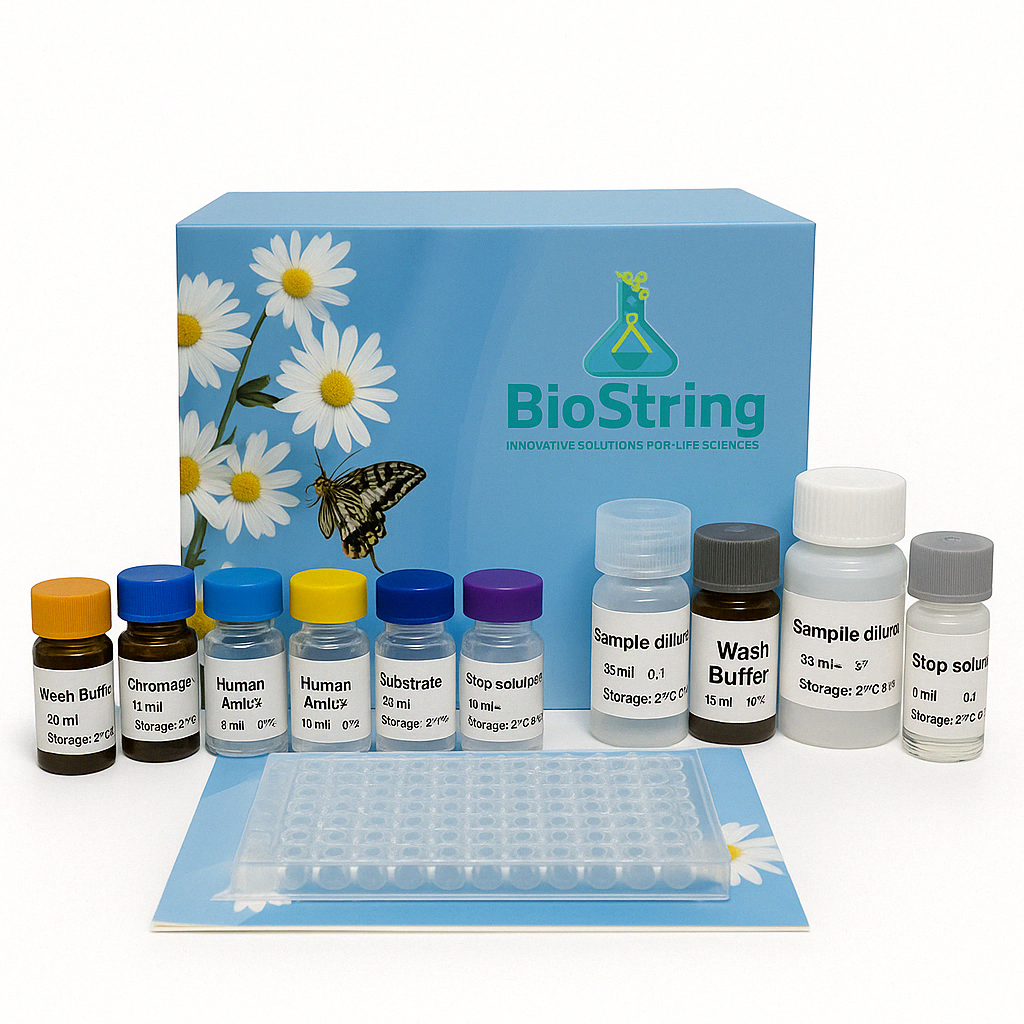Specificity
This assay has high sensitivity and excellent specificity for detection of Trypsinogen Activation Peptide (TAP).
No significant cross-reactivity or interference between Trypsinogen Activation Peptide (TAP) and analogues was observed.
Recovery
Matrices listed below were spiked with certain level of recombinant Trypsinogen Activation Peptide (TAP) and the recovery rates were calculated by comparing the measured value to the expected amount of Trypsinogen Activation Peptide (TAP) in samples.
| Matrix | Recovery Range(%) | Average Recovery(%) |
| serum(n=5) | 93-101 | 96 |
| EDTA plasma(n=5) | 78-92 | 86 |
| heparin plasma(n=5) | 80-97 | 81 |
Precision
Intra-assay Precision (Precision within an assay): 3 samples with low, middle and high level Trypsinogen Activation Peptide (TAP) were tested 20 times on one plate, respectively.
Inter-assay Precision (Precision between assays): 3 samples with low, middle and high level Trypsinogen Activation Peptide (TAP) were tested on 3 different plates, 8 replicates in each plate.
CV(%) = SD/meanX100
Intra-Assay: CV<10%
Inter-Assay: CV<12%
Linearity
The linearity of the kit was assayed by testing samples spiked with appropriate concentration of Trypsinogen Activation Peptide (TAP) and their serial dilutions. The results were demonstrated by the percentage of calculated concentration to the expected.
| Sample | 1:2 | 1:4 | 1:8 | 1:16 |
| serum(n=5) | 99-105% | 79-89% | 90-98% | 85-96% |
| EDTA plasma(n=5) | 80-104% | 90-97% | 92-99% | 97-104% |
| heparin plasma(n=5) | 78-93% | 86-101% | 92-104% | 87-98% |
Stability
The stability of kit is determined by the loss rate of activity. The loss rate of this kit is less than 5% within the expiration date under appropriate storage condition.
To minimize extra influence on the performance, operation procedures and lab conditions, especially room temperature, air humidity, incubator temperature should be strictly controlled. It is also strongly suggested that the whole assay is performed by the same operator from the beginning to the end.
Test principle
This assay employs the competitive inhibition enzyme immunoassay technique. A monoclonal antibody specific to Trypsinogen Activation Peptide (TAP) has been pre-coated onto a microplate. A competitive inhibition reaction is launched between biotin labeled Trypsinogen Activation Peptide (TAP) and unlabeled Trypsinogen Activation Peptide (TAP) (Standards or samples) with the pre-coated antibody specific to Trypsinogen Activation Peptide (TAP). After incubation the unbound conjugate is washed off. Next, avidin conjugated to Horseradish Peroxidase (HRP) is added to each microplate well and incubated. The amount of bound HRP conjugate is reverse proportional to the concentration of Trypsinogen Activation Peptide (TAP) in the sample. After addition of the substrate solution, the intensity of color developed is reverse proportional to the concentration of Trypsinogen Activation Peptide (TAP) in the sample.



Reviews
There are no reviews yet.